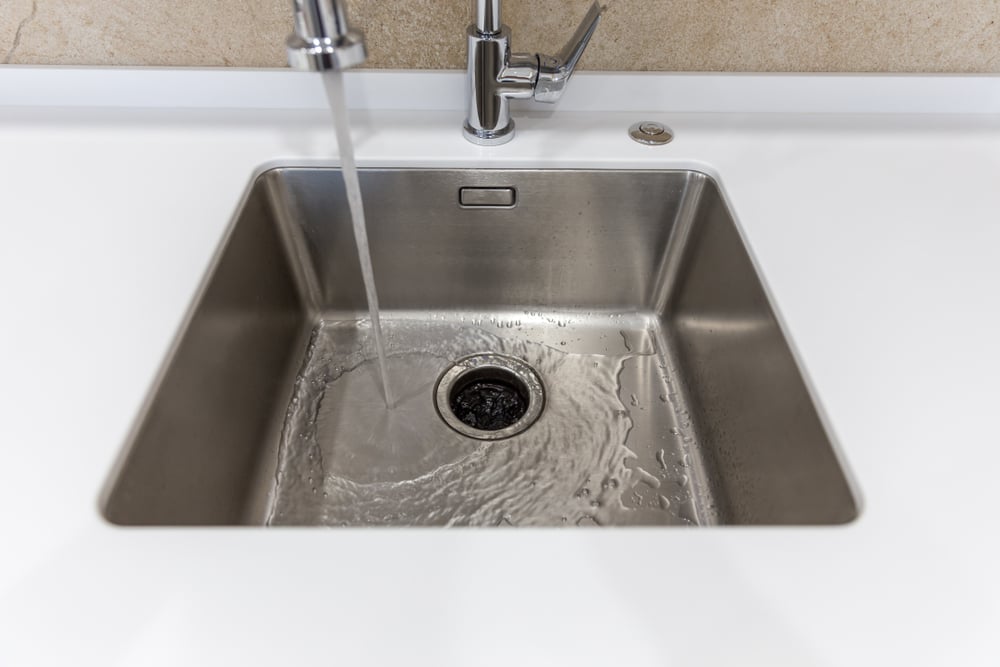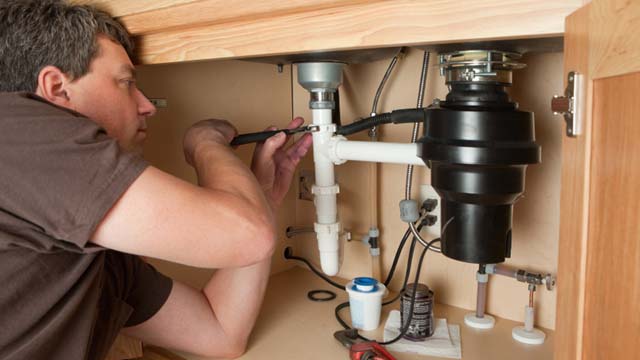Step-by-Step Techniques for Repairing a Leaky Garbage Disposal
Step-by-Step Techniques for Repairing a Leaky Garbage Disposal
Blog Article
The content listed below relating to The Handy Guide To Fixing Your Garbage Disposal Leaking is incredibly enlightening. Don't overlook it.

Waste disposal unit are important kitchen area appliances that help in throwing away food waste successfully. However, a leaking garbage disposal can be an aggravating and untidy issue to handle. Thankfully, several leakages can be dealt with conveniently with a few straightforward actions. In this post, we will certainly go over exactly how to repair a leaking waste disposal unit successfully.
Introduction
Garbage disposals are installed under cooking area sinks and are created to shred food waste right into smaller items, permitting it to travel through the pipes system conveniently. While these devices are typically reliable, leakages can happen over time because of damage, loosened links, or damages to the device.
Step-by-Step Overview to Fixing a Leaking Waste Disposal Unit
Switch off the Power
Prior to attempting any kind of repairs, guarantee that the power to the waste disposal unit system is shut off to avoid the danger of electric shock.
Situate the Leak
Recognize the exact location of the leak and determine the reason
Tighten Connections
Make use of a wrench to tighten any loosened connections in between the disposal unit and the plumbing system.
Change Seals or Gaskets
If the leakage is because of used seals or gaskets, get rid of the old components and replace them with brand-new ones.
Patching Splits or Holes
For fractures or openings in the disposal device, use epoxy or a suitable patching material to seal the damaged area.
Determining the Resource of the Leakage
Prior to attempting to take care of a dripping waste disposal unit, it is important to determine the resource of the leakage. This can typically be done via visual assessment or by conducting straightforward examinations.
Visual Examination
Check the waste disposal unit unit meticulously for any kind of indicators of water leakage. Pay very close attention to locations around seals, gaskets, and connection points.
Testing for Leaks
One means to test for leaks is by running water with the disposal device and checking for any type of noticeable signs of leakage.
Typical Reasons For Leakages in Waste Disposals
Worn Seals and Gaskets
Seals and gaskets play a critical role in avoiding water from leaking out of the garbage disposal. Gradually, these parts can deteriorate, resulting in leaks around the disposal system.
Loose Connections
The links in between the waste disposal unit and the plumbing system can end up being loosened gradually, causing water to leak out during operation.
Cracks or Openings in the Disposal Unit
Physical damages to the waste disposal unit, such as cracks or holes in the housing, can likewise lead to leaks.
Tools and Materials Needed for Repairing a Leaking Waste Disposal Unit
Prior to starting the repair service process, gather the necessary tools and products, consisting of a screwdriver, adjustable wrench, plumbing technician's putty, replacement seals or gaskets, and epoxy or patching material for repairing cracks or openings.
Evaluating the Garbage Disposal After Repair Work
When the fixing is full, check the waste disposal unit by running water with it to make sure that the leakage has actually been solved.
Preventive Maintenance Tips to Avoid Future Leakages
To avoid future leakages, it is necessary to perform regular upkeep on your garbage disposal. This includes keeping it clean, staying clear of placing non-food items or difficult objects down the disposal, and periodically looking for leaks or various other problems.
Conclusion
To conclude, fixing a dripping waste disposal unit is a fairly straightforward process that can be completed with basic tools and materials. By adhering to the steps described in this article and exercising preventive maintenance, you can maintain your garbage disposal in good working condition and stay clear of costly repair work in the future.
What to Do About a Leaking Garbage Disposal
A leaking garbage disposal often goes unnoticed until you confront a sopping cabinet, a foul-smelling puddle, or an audible drip-drip-drip from the unit. The fix can be frustrating, too, because the leak can stem from a number of components in the system. Fortunately, with a little sleuthing, you can zero in on the leak and—depending on the exact location—stop the icky oozing and repair the component that caused it. Worst case scenario, if it turns out that the garbage disposal must be replaced, installing a new one is a reasonable do-it-yourself task for those with basic plumbing skills. Read on to keep the cash you’d otherwise hand over to a pro.
Prepare to find the leak
Prior to testing the garbage disposal for leaks, unplug it at the wall outlet and turn off the power from the breaker box to prevent electrical shock. Then insert a watertight sink stopper into your sink drain and wipe the unit dry with a clean cloth. In any handy container, mix a few drops of food coloring into a few cups of water, and pour the dyed water onto the sink stopper to help you locate the leak.
Investigate the source
the top, where the disposal meets the sink drain the side, where the dishwasher hose or main drain pipe connects to the disposal or the bottom of the unit Inspect each of these locations while gliding a light-colored rag over the unit; the dyed water will readily show on the rag and reveal the location of the leak. If a leak isn’t immediately apparent, remove the sink stopper and pour a few more cups of dyed water down the sink drain, then check for leaks again. Leaks near the top of the unit are more likely to show themselves while the sink is plugged, while side and bottom leaks are more noticeable while the sink is unplugged.
The metal sink flange that sits directly inside the sink drain is typically sealed around the top with plumber’s putty (a clay-like sealant) and then secured from under the sink with bolts. If the plumber’s putty deteriorates, or the bolts loosen, the flange can no longer form a watertight seal between the sink drain and the disposal—which could cause a leak at the top of the unit.
To reseal the leaky flange, you must first detach the garbage disposal. Start by loosening the screws securing the main drain pipe to the disposal, then loosen the screws in the metal clamp securing the dishwasher hose to the disposal and detach the drain pipe and dishwasher hose from the disposal. Loosen the screws in the mounting ring that connects the disposal to the metal mounting assembly beneath the sink, then pull down the disposal and carefully set it on a clean, dry surface. Loosen the bolts in the mounting assembly with a wrench, then pull down the mounting assembly and set it near the disposal.

As a keen person who reads about Tips on Fixing a Leaking Garbage Disposal, I think sharing that section was really useful. Sharing is good. Who knows, you will be helping someone out. I enjoy reading our article about Why Is .
Give Me A Quote! Report this page